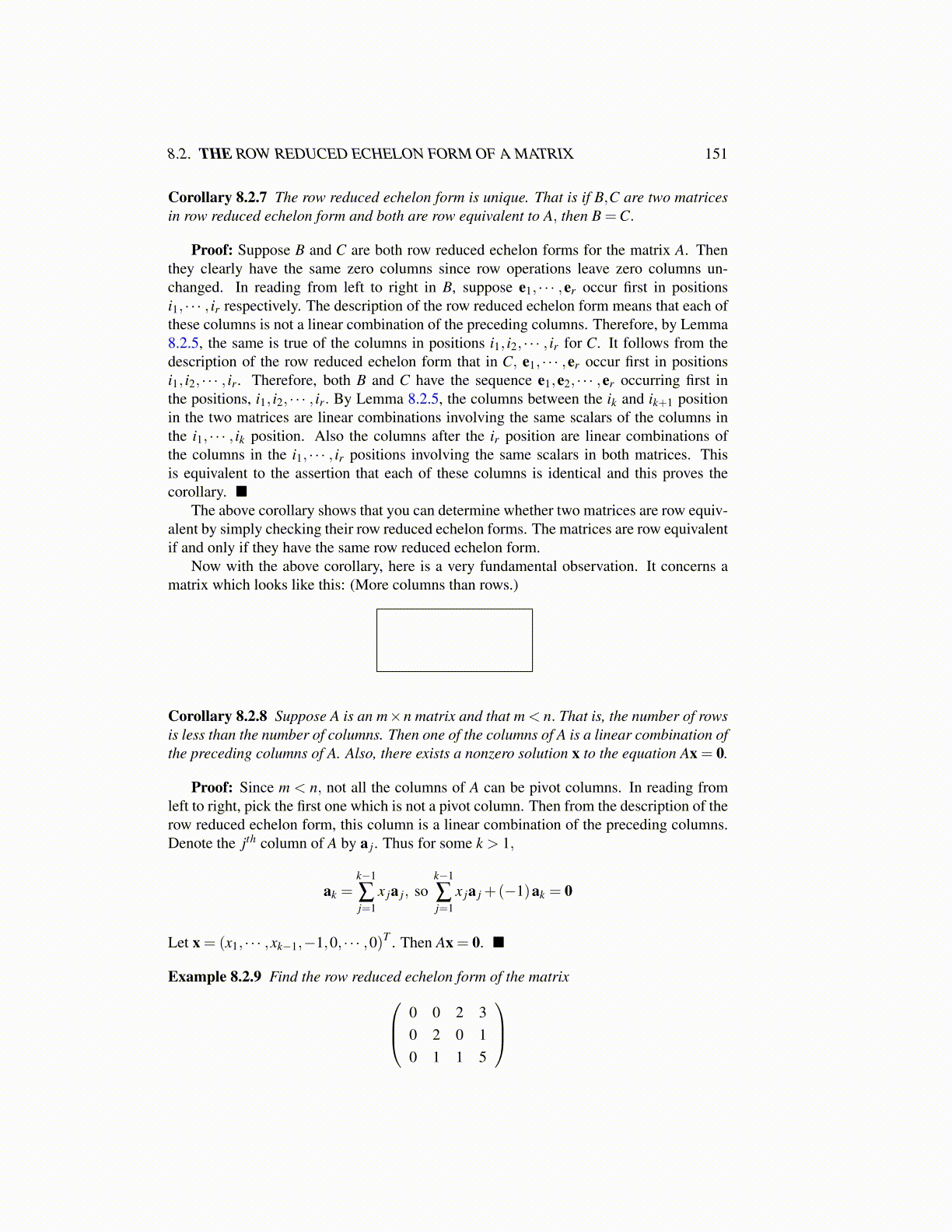
8.2. THE ROW REDUCED ECHELON FORM OF A MATRIX 151
Corollary 8.2.7 The row reduced echelon form is unique. That is if B,C are two matricesin row reduced echelon form and both are row equivalent to A, then B =C.
Proof: Suppose B and C are both row reduced echelon forms for the matrix A. Thenthey clearly have the same zero columns since row operations leave zero columns un-changed. In reading from left to right in B, suppose e1, · · · ,er occur first in positionsi1, · · · , ir respectively. The description of the row reduced echelon form means that each ofthese columns is not a linear combination of the preceding columns. Therefore, by Lemma8.2.5, the same is true of the columns in positions i1, i2, · · · , ir for C. It follows from thedescription of the row reduced echelon form that in C, e1, · · · ,er occur first in positionsi1, i2, · · · , ir. Therefore, both B and C have the sequence e1,e2, · · · ,er occurring first inthe positions, i1, i2, · · · , ir. By Lemma 8.2.5, the columns between the ik and ik+1 positionin the two matrices are linear combinations involving the same scalars of the columns inthe i1, · · · , ik position. Also the columns after the ir position are linear combinations ofthe columns in the i1, · · · , ir positions involving the same scalars in both matrices. Thisis equivalent to the assertion that each of these columns is identical and this proves thecorollary. ■
The above corollary shows that you can determine whether two matrices are row equiv-alent by simply checking their row reduced echelon forms. The matrices are row equivalentif and only if they have the same row reduced echelon form.
Now with the above corollary, here is a very fundamental observation. It concerns amatrix which looks like this: (More columns than rows.)
Corollary 8.2.8 Suppose A is an m×n matrix and that m < n. That is, the number of rowsis less than the number of columns. Then one of the columns of A is a linear combination ofthe preceding columns of A. Also, there exists a nonzero solution x to the equation Ax = 0.
Proof: Since m < n, not all the columns of A can be pivot columns. In reading fromleft to right, pick the first one which is not a pivot column. Then from the description of therow reduced echelon form, this column is a linear combination of the preceding columns.Denote the jth column of A by a j. Thus for some k > 1,
ak =k−1
∑j=1
x ja j, sok−1
∑j=1
x ja j +(−1)ak = 0
Let x = (x1, · · · ,xk−1,−1,0, · · · ,0)T . Then Ax = 0. ■
Example 8.2.9 Find the row reduced echelon form of the matrix 0 0 2 30 2 0 10 1 1 5